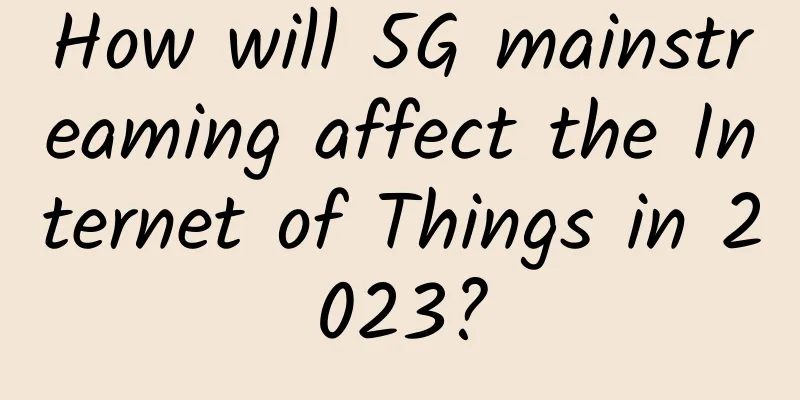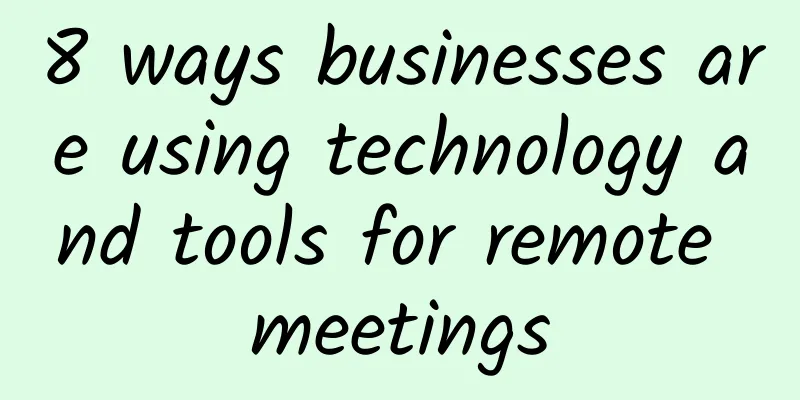How will 5G mainstreaming affect the Internet of Things in 2023?

|
The number of Internet of Things (IoT) endpoints will increase from a few million to more than 55 billion by 2025. The development of 5G networks will be one of the most important factors leading to this expansion. 5G connectivity is great news for the IoT market, in part because 5G networks will significantly improve the performance and reliability of these connected devices. What does 5G mean for the Internet of Things?5G, or fifth-generation wireless, is the latest version of cellular technology and is designed to significantly increase the responsiveness and speed of wireless devices. The International Telecommunication Union (ITU) sets minimum guidelines for new technologies, and the 3rd Generation Partnership Project (3GPP) further defines and standardizes the technology. While the initial 5G standards release, 3GPP Release 15, focuses on upgraded mobile broadband (eMBB) to deliver greater capacity, faster throughput and lower latency, it also defines the 5G New Radio (NR) technology foundation that will serve as a platform for future development. In the next 5G specification update, 3GPP Release 16, 5G coverage will be extended to other areas by adding new features. Release 16 provides improved ultra-reliable low-latency communication (eURLLC) to achieve millisecond-level latency, time-sensitive networking (TSN) to support time-deterministic communication, and unlicensed spectrum (NR-U) and dedicated network assistance for more flexible deployment. Release 16 also introduces high-reliability 5G geolocation, which complements current positioning services such as GNSS and enables a variety of 5G IoT use cases such as asset tracking. 5G will also efficiently connect billions of moderately complex IoT devices, such as environmental sensor devices and electricity meters. Typically, these IoT devices are latency tolerant, low complexity, and energy efficient. While Release 16 begins addressing the IoT needs of any of these mission-critical nodes with extreme performance (e.g. IIoT) and extremely simple complexity (e.g. NB-IoT), there is a wide range of IoT use cases between the two. In response, 3GPP Release 17 introduces 5GNR-Light, which will deliver new efficiencies for devices with reduced complexity, such as industrial cameras, high-end wearables, entry-level smartphones, and more. Benefits of using IoT devices in 5G cellular networks5G provides faster, more reliable, and more secure communications, which is driving the development of self-driving cars, smart grids for renewable energy, and artificial intelligence robots for deployment on factory floors. It is unleashing a massive IoT ecosystem where networks can serve billions of connected devices with the right bandwidth, latency, and pricing trade-offs. Let’s examine these advantages in more detail: 1. Support high-speed data exchange between devicesThe profitability of any IoT implementation ultimately depends on its functionality, which is determined by how fast it can connect to several other IoT systems, tablets and phones, technology in the form of websites or apps, and other types of software. With the advent of 5G, data transfer rates will increase significantly. Reports indicate that 5G will indeed be 10 times faster than LTE networks. This increase in speed will allow IoT devices to convert and exchange data faster than ever before. 2. Make the network more reliableIn addition to providing faster connections, 5G networks operate more stably, resulting in greater security and reliability. Reliable and stable network conditions are critical for any IoT, especially for monitoring systems that rely on real-time updates, such as security systems, surveillance cameras, and other connected devices. Due to the ability of 5G networks to support more connected devices, users will enjoy greater reliability for a variety of connected devices. 3. Improve user experience with lower latencyLatency is the time interval that exists between the completion of an action and its subsequent response. For example, the time from clicking a website link to the time the browser displays that website. 5G networks will significantly reduce latency compared to 4G LTE. One experiment showed it could be below 5 milliseconds. This reduced latency will allow real-time networking, which will support new applications such as the Internet of Things (IoT) and Artificial Intelligence (AI). 4. Support large-scale IoT implementation5G will offer a wider frequency range and 1,000 times the capacity of 4G. It will be able to connect numerous internet-enabled devices, such as smartphones, sensors, and Internet of Things (IoT) devices, and manage numerous high-demand applications simultaneously. Due to its low cost, energy efficiency, and reliable coverage, it allows for large-scale deployment of more efficient and easy-to-use devices. 5. Segment IoT usage through network slicing5G supports the installation of virtualized networks, often referred to as network slicing, which enables users and manufacturers to provide customized connections. Determining connection priorities and adjusting latency helps ensure that the network is resilient in the event of an overload or disaster. For example, in a hospital, the network might be built to prioritize connections between surgeons and robots over communications used by patients. As a result, emergency communications can be protected even when the network is at maximum capacity. Top IoT use cases for 5G in 2023By 2023, mainstreaming of 5G networks will have the greatest impact in the following IoT implementation areas: 1. Smart Home and Smart CityIoT gadgets and fitness apps that sync with smart homes, watches and phones are all the rage now. The future of 5G will look very different in 20 years due to the current large-scale reliance on cellular IoT. Self-driving cars and automation of utility services such as waste management will be widely deployed. The use of smart grids and environmental monitoring will also increase in order to minimize greenhouse gas emissions and pollution. 2. Smart Grid and Utility OperationsToday, the demand for electricity continues to rise. Smart grids and virtual power plants are the technological answers to this problem. 5G enables real-time management and automation of smart grids. Maintenance work will also be simplified once we start to detect problems in a timely manner and provide remedial measures. 5G is gaining widespread acceptance due to its faster deployment and lower cost compared to wired alternatives, so utility operators are gradually incorporating new sensors, control systems and renewable energy sources into their networks. 3. National security and video surveillanceVideo surveillance is another 5G-centric IoT application that is expected to flourish. Given recent global developments, governments are willing to invest in public surveillance and security measures. Currently, video surveillance systems rely on wired communications, but the introduction of wireless networks is likely to speed up installation and reduce costs, while improving connectivity and performance compared to wired systems. in conclusion5G is a global technology that is being continuously deployed using 3GPP international standards. It was created to ensure compatibility and support for IoT, and it is still continuously improving the agreed standards. In addition to 4G support for IoT, Releases 15 and 16 of the 3GPP standards will provide additional support for IoT devices with 5G characteristics, such as ultra-security and reliability and low latency. Other 5G advancements, such as network slicing, secure networks, and the 5G core, will help realize the vision of a global IoT network capable of supporting a large number of connected devices. The entire process is scheduled to begin in 2023 as 5G quickly becomes mainstream and IoT becomes increasingly popular. |
<<: Enterprise 5G: A guide to planning, architecture and benefits
>>: Application research on intercepting web crawler traffic technology
Recommend
5G, Industry 5.0, eSIM connection: the key to the future development of the Internet of Things
On February 9, 2022, Eseye, a provider of IoT con...
RackNerd New Year Sale: VPS in multiple data centers in San Jose/Seattle and other places starting at $10 per year
RackNerd has launched a New Year 2023 sales event...
Why does the HTTP request return 304?
[[402402]] I believe most web developers are fami...
Huobo Technology Chen Ye: To B is the middle platform, To C opens up the content consumption market
Recently, Chen Ye, founder and CEO of Huobo Techn...
Can IPTV also have a nationwide network?
IPTV is good, everyone knows it! The number of IP...
What will 6G look like in the future?
[[389986]] At the recently concluded MWC Shanghai...
Goodbye! Another important business of the three major operators has been "cut off"!
As the Internet gradually moves towards mobile te...
Difference between web scraping and web crawling
People sometimes mistakenly use the terms “web sc...
TNAHosting: 12GB RAM and large hard disk OpenVZ monthly payment starts at $5, KVM annual payment starts at $15
TNAHosting is a foreign hosting company establish...
5G is just about faster internet speed? If you think so, you are out!!!
1. What is 5G? The world's communication tech...
Gartner predicts that global IT spending will reach $4 trillion in 2021
Gartner, the world's leading information tech...
RackNerd: $194/month cluster server-E3-1240v3/16GB/1TB/30TB/237IP/Los Angeles and other data centers
We have shared information about RackNerd many ti...
Zhaorong Tribe wishes you a happy new year! Good luck in the Year of the Tiger!
On the occasion of the Chinese New Year, the trib...
In 2021, the development of 6G in various countries will accelerate, and the deployment of network satellites will become the focus.
Although 5G has only just become a reality, techn...
Report: Global 5G RAN market shows strong growth
Global demand for 5G RAN is expected to grow at a...





![[12.12] DogYun Dynamic Cloud 40% off, Classic Cloud 20% off, Dedicated Server 100 yuan off per month, Lucky Wheel Prize draw](/upload/images/67cac4662d5a7.webp)



